How to Craft an Effective Blogging Business Plan That Nails Your Blog’s Success (Template)
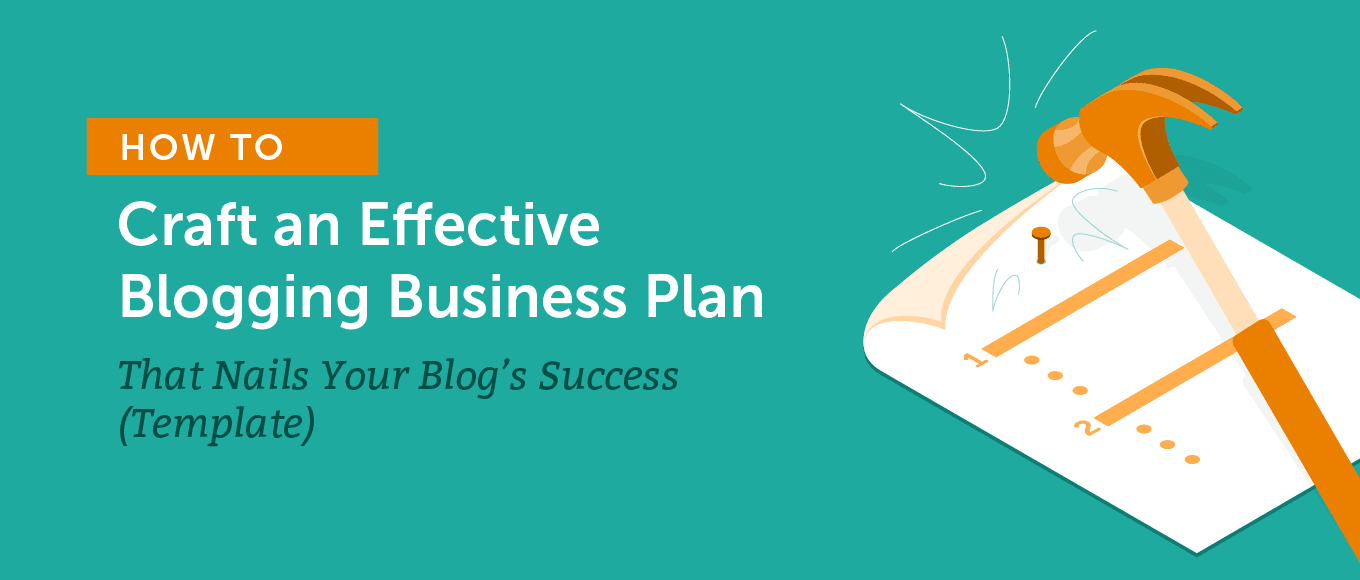 Jumping into the wonderful world of blogging is exhilarating.
A blog is your little square of the internet where you can express yourself authentically – and make money doing so. There are so many tools online to help you do so: platforms, themes, plugins, guides…
But when getting swept up in the excitement of a new project, it can be easy to forget one very tiny detail.
Creating a blog is so easy that everyone can do it. And everyone pretty much does.
At last count, about a quarter of all active websites on the internet were blogs. According to Statista, at least 31 million of those originated from US bloggers alone. That number’s up by about six million in the last few years.
Sure, you’ve got a killer theme, a super fun blog name and a first few posts brimming with passion.
You’re still not unique.
If you want to be, it’s going to take more than just a catchy name and snappy content. It’ll take a shift in your mindset.
From now on, let this be your mantra. You aren’t starting a blog. You’re about to start a blogging business.
Set yourself apart and started on the right foot by planning it like one. Here’s how.
Jumping into the wonderful world of blogging is exhilarating.
A blog is your little square of the internet where you can express yourself authentically – and make money doing so. There are so many tools online to help you do so: platforms, themes, plugins, guides…
But when getting swept up in the excitement of a new project, it can be easy to forget one very tiny detail.
Creating a blog is so easy that everyone can do it. And everyone pretty much does.
At last count, about a quarter of all active websites on the internet were blogs. According to Statista, at least 31 million of those originated from US bloggers alone. That number’s up by about six million in the last few years.
Sure, you’ve got a killer theme, a super fun blog name and a first few posts brimming with passion.
You’re still not unique.
If you want to be, it’s going to take more than just a catchy name and snappy content. It’ll take a shift in your mindset.
From now on, let this be your mantra. You aren’t starting a blog. You’re about to start a blogging business.
Set yourself apart and started on the right foot by planning it like one. Here’s how.
How to Craft an Effective Blogging Business Plan That Nails Your Blog’s Success (Template) by @JuliaEMcCoy via @CoSchedule
Click To TweetDOWNLOAD: Business Plan for Bloggers (Template)
Make putting this advice into practice easy with this downloadable template:What Exactly is a Business Plan (And Why Does Your Blog Need One)?
A business plan is a document that forms the blueprint for a business venture. It identifies the company’s mission, goals, strategy, competition, and financial viability.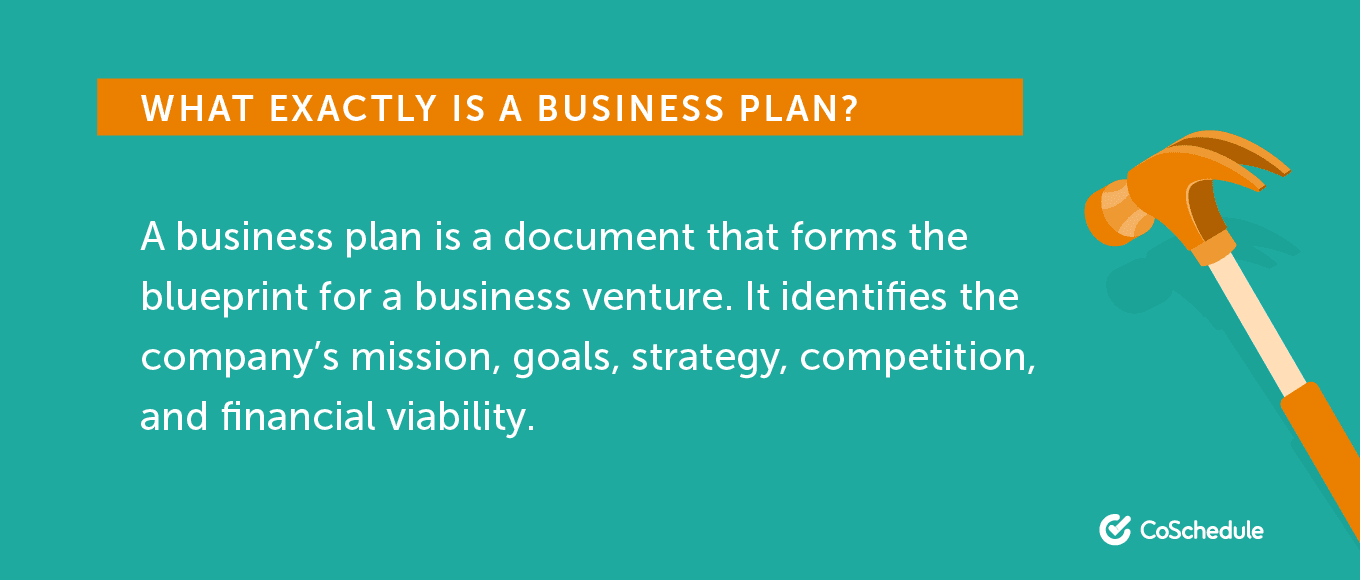 All successful businesses have one. In fact, there’s quite a bit of scientific evidence out there that the presence (or absence) of a business plan will make (or break) a company’s success.
All successful businesses have one. In fact, there’s quite a bit of scientific evidence out there that the presence (or absence) of a business plan will make (or break) a company’s success.
How to Write a Blogging Business Plan That Works
Approaching blogging as a business is the number one thing you can do to stand out from the 547,200 websites that will be created today. Creating a blogging business plan is the first step to setting yourself apart from the amateur and hobbyist bloggers. Many different examples of business plans exist online, some more elaborate than others. However, if you spend some time looking around, you’ll see that all business plans have five core parts. These are:- The Executive Summary
- Brand identification
- Overall business strategy
- Market and audience analyses
- Financial considerations
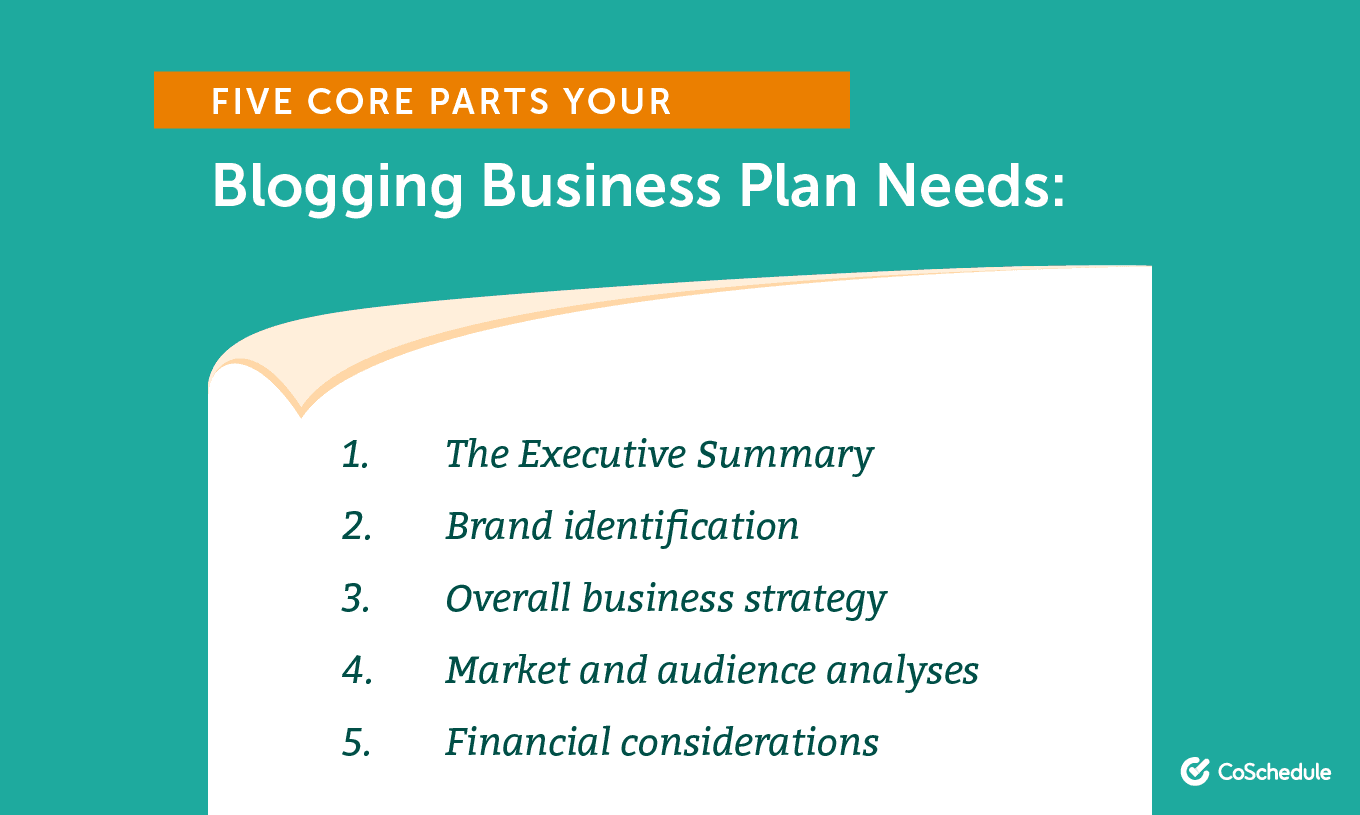 To be truly considered complete, your blogging business plan should have all of these. Let’s dive into each.
To be truly considered complete, your blogging business plan should have all of these. Let’s dive into each.
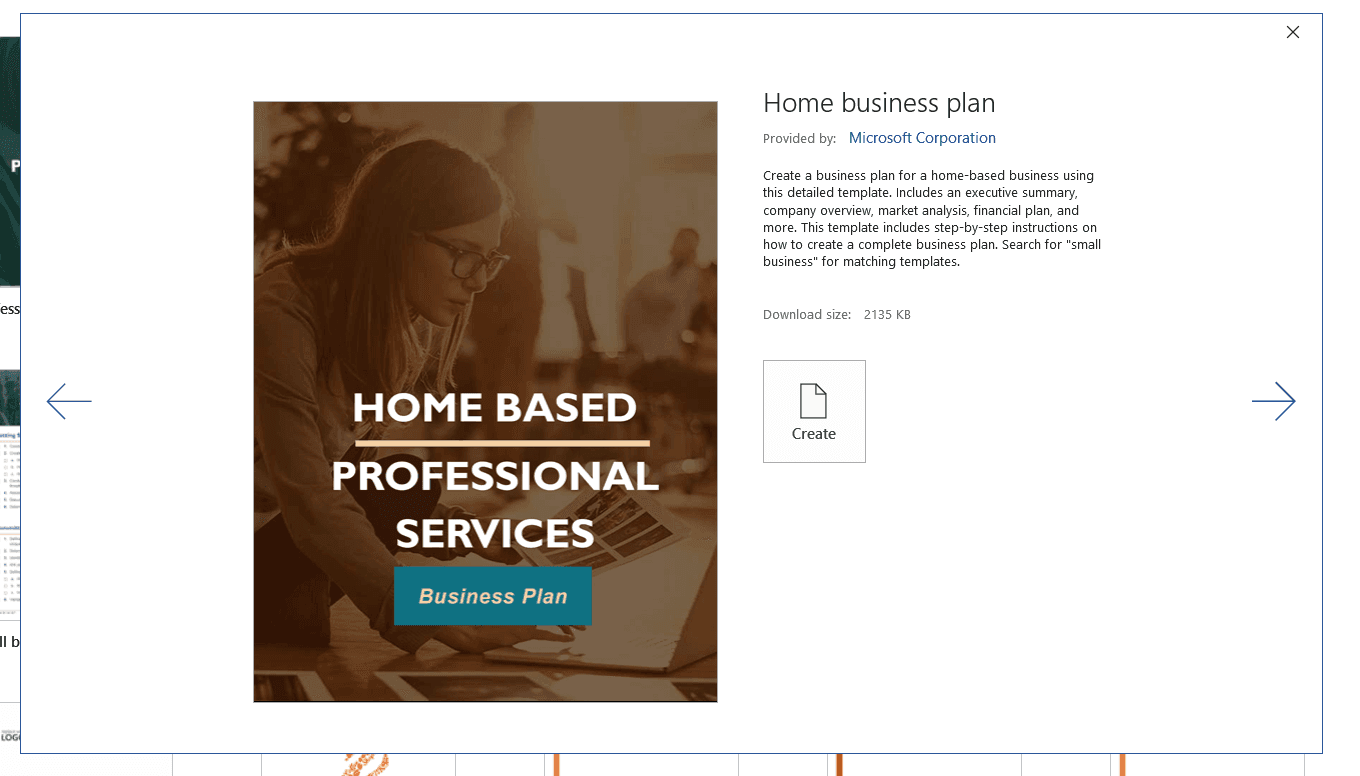 You can find business plan templates to get started in most word processing programs.
You can find business plan templates to get started in most word processing programs.
Step 1: Concentrate Your Vision With an Executive Summary
A business plan begins with an executive summary. It’s like the elevator pitch for your business. In the space of about a page, a reader should gain a pretty good sense of who you are and what you’re about. In this section, you should include:- A mission statement. This is a statement of purpose which lays out what a company hopes to accomplish and its general approach to its objectives. It’s your guiding star to which you can turn whenever you need direction, inspiration, or even a little courage to hit that publish button. Here are some pointers on writing a powerful one.
- Author overview. For solopreneurs, include a little bit about yourself, your background, and what makes you an authority on your topic or mission.
- An overview of your target audience. Introduce your ideal reader.
- Vision statement. Where do you want this blog to go over time? Your vision statement will lay out your future position – what you hope your blog to become.
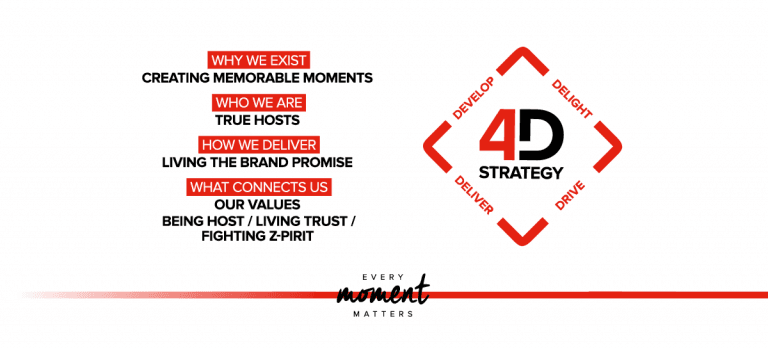 Mission statements can be simple but impactful. Source: Radisson Hospitality.
Mission statements can be simple but impactful. Source: Radisson Hospitality.
Step 2: Define Your Identity with Brand Goals & Guidelines
Once you’ve got an overview of your project, it’s time to start thinking about the details. Yes, we mean branding. In this section, detail things like:- Your blog name and an overview of its vibe. Create the foundation for your branding guidelines. These will inform your marketing efforts later.
- Your categories, topics, hashtags. By now, you should have a niche. Flesh this out with a deeper consideration of how you identify that niche on your blog and across your marketing campaigns. Make sure that your categories, topics, or other identifiers like hashtags are interconnected and make sense.
- Practices and processes for posting. Will you only use illustrations or photos for your images? Will you have a set of editorial guidelines for guest bloggers? Identify these now.
- Opportunities for future expansion. What opportunities might exist for your brand and blog in the future? For example, do you hope to publish a book down the road?
Step 3: Study Your Market & Audience
Most of the time, people start businesses (and blogs) because they’ve already identified a market need or a resource gap. You’ve got something worthwhile to say that other people aren’t saying. First, develop a sense of just how you fit into (or stand out from) the conversation by studying who already is blogging on your topic. Then, identify strategies to attract your target audience and enter into your market.- Your competition. Who else is blogging in your chosen niche? Compile brief profiles on the leading blogs, including their marketing strategies, their resources (such as ebooks or courses), or any particular features that stand out to you. Figure out what they do really well and why it works.
- Your not-so-competitive rivals. Find some smaller, newer, or overall less successful blogs in your niche. Do the same as above but try to identify what you would do to improve their readership or overall success.
- Your target readers. Take some time to dive into who they are. At this point, you may want to create a target audience persona and lay the groundwork for what a marketing campaign would look like for them.
- Networking opportunities. When researching a niche, you’ll undoubtedly come across comparable and complementary blogs or brands. Make note of these and define strategies for building relationships with them.
 A competitor analysis can help you identify strengths, weaknesses, and opportunities. Get our template now.
A competitor analysis can help you identify strengths, weaknesses, and opportunities. Get our template now.
Step 4: Lay the Groundwork for Your Blogging Strategy
By now, your blogging business plan is looking pretty professional but there’s still more work to be done. Lay the foundation of your blogging strategy by identifying:- Schedule.Consistency is the key to success. You should develop a blogging schedule and stick to it. Consistency helps get readers in the habit of returning to your blog at regular intervals and makes it easier to get yourself in the habit of a regular deadline.
- Marketing strategy. How do you intend to market yourself and your offerings? Many blogs use email lists and social media, but you may also want to consider things like outreach marketing</>.
- Offerings and income streams. Identify how you’ll provide value to your readers while developing income streams. You may want to refer to your vision statement and the opportunities for future expansion that you identified in step two.
- Blog Analytics Tools. The internet holds a treasure trove of analytics tools to help you track the performance of your blog. What will you use, and why will they help you be successful?
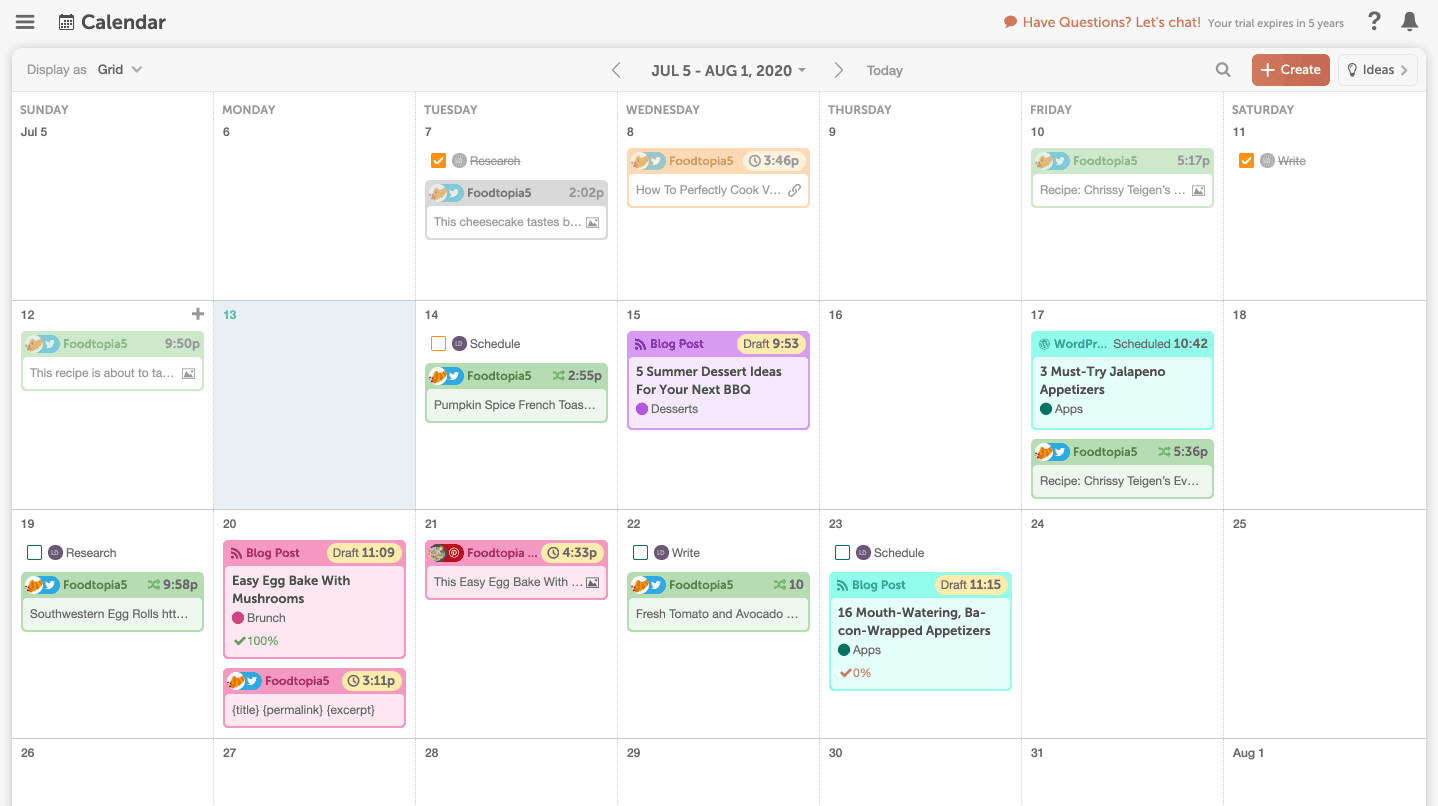
Step 5: Plan for the Future by Considering the Financials
Phew, that was a lot! The last step for any solid blogging business plan is to consider what it’s going to cost to get started. Having a sense of what everything costs will prevent unpleasant surprises in the future. (For a primer on handling business money, check out these great tips for managing your blog’s money and expenses.) Depending on how your first four steps look, you’ll have a range of expenses. Consider including:- The cost of your domain and hosting.
- Any themes or plugins that you purchase for your blog.
- Website and blog branding, logo or design fees.
- Subscriptions for tools or software to help you manage your content.
- Licenses for stock photography or illustrations, or, the cost of a brand photoshoot.
- Business cards, Facebook ads, or promotional items.
- Your internet subscription.
- Business registration fees (if any).
- Hardware or office supplies.
 Identifying and keeping track of operating expenses is critical to staying in business.
Identifying and keeping track of operating expenses is critical to staying in business.


